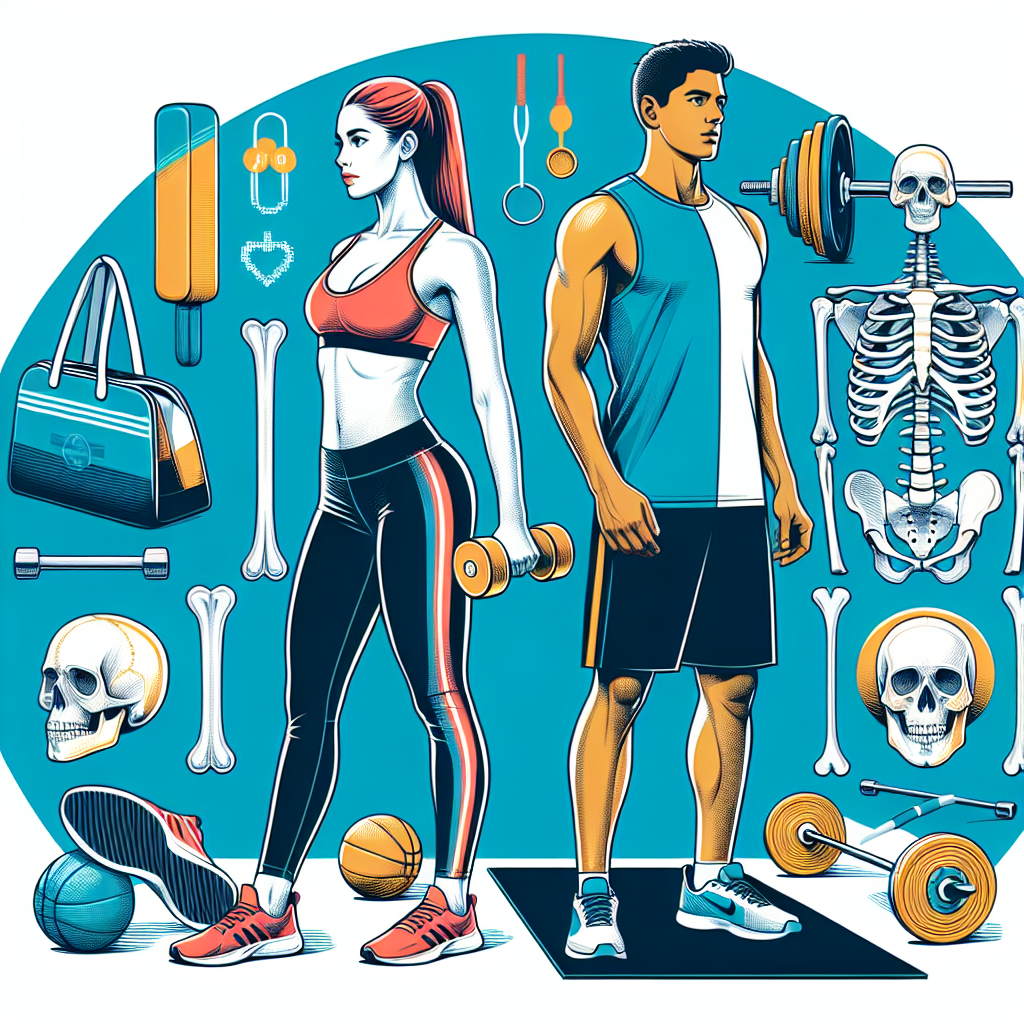How to Improve Your Bone Health with Weight-Bearing Exercise
Maintaining strong and healthy bones is crucial for overall wellness, especially as we age. One of the most effective ways to achieve this is through weight-bearing exercises. These types of physical activities force your body to work against gravity, which in turn stimulates bone formation and improves bone density. Let’s delve into how weight-bearing exercises can enhance your bone health and explore some practical tips for incorporating them into your routine.
Understanding Bone Health and Its Importance
Bones are living tissues that constantly undergo a process known as remodeling, where old bone tissue is broken down and replaced by new bone tissue. This process is influenced by various factors, including genetics, diet, age, and physical activity. After the age of 30, bone mass generally starts to decline, increasing the risk of osteoporosis and fractures. Therefore, it is essential to adopt lifestyle practices that promote bone health and enhance bone density.
The Role of Weight-Bearing Exercise
Weight-bearing exercises are activities that require your bones and muscles to work against gravity. These exercises can be classified into two categories: high-impact and low-impact.
High-Impact Weight-Bearing Exercises: These activities involve movements that make your bones and muscles work harder, such as:
– Running or Jogging: These activities exert significant stress on your bones, particularly those in the legs, hips, and spine.
– Jumping Rope: This exercise helps in building bone density in the legs and improves overall coordination.
– Dancing: Movements in dancing stimulate bone formation and enhance balance and coordination.
– Hiking: Walking on an incline or uneven terrain challenges your bones and muscles more than flat ground walking.
Low-Impact Weight-Bearing Exercises: These exercises are gentler on your joints but still beneficial for bone health, including:
– Walking: A simple yet effective way to stimulate bone development, especially when done regularly.
– Elliptical Training: This exercise provides a weight-bearing workout with less impact on the joints.
– Stair Climbing: Utilizing stairs can help in building bone density in the legs and hips.
– Tai Chi: This ancient practice improves balance and coordination while providing mild weight-bearing benefits.
Benefits of Weight-Bearing Exercises for Bone Health
Weight-bearing exercises offer several advantages for maintaining and improving bone health:
1. Increased Bone Density: Regular weight-bearing activities stimulate bone-forming cells (osteoblasts), leading to stronger and denser bones.
2. Improved Balance and Coordination: These exercises help enhance muscle strength and balance, reducing the risk of falls and fractures.
3. Enhanced Joint Health: Weight-bearing exercises aid in preserving joint mobility and preventing stiffness.
4. Boosted Muscle Strength: Engaging in these activities also strengthens the muscles surrounding your bones, providing additional support and protection.
5. Overall Health Improvement: Besides bone health, weight-bearing exercises contribute to cardiovascular fitness, weight management, and mental well-being.
Tips for Incorporating Weight-Bearing Exercises into Your Routine
To maximize the benefits of weight-bearing exercises, consider the following tips:
1. Start Gradually: If you’re new to exercise, begin with low-impact activities like walking or tai chi and gradually progress to more strenuous activities such as jogging or dancing.
2. Consistency is Key: Aim to engage in weight-bearing exercises for at least 30 minutes, most days of the week.
3. Mix It Up: Incorporate a variety of exercises to target different muscle groups and prevent boredom.
4. Strength Training: Include resistance training exercises, such as lifting weights or using resistance bands, to complement your weight-bearing activities. These exercises further stimulate bone growth.
5. Stay Balanced: Pay attention to both sides of your body to prevent imbalances that could lead to injury.
6. Listen to Your Body: If you experience pain or discomfort, stop the exercise and consult a healthcare professional.
FAQs
1. What are weight-bearing exercises?
Weight-bearing exercises are physical activities that force your body to work against gravity, thereby stimulating bone formation and improving bone density. Examples include walking, jogging, hiking, and dancing.
2. How often should I perform weight-bearing exercises?
Aim to engage in weight-bearing exercises for at least 30 minutes, most days of the week, to reap the maximum benefits for your bone health.
3. Are there any age restrictions for weight-bearing exercises?
Weight-bearing exercises can be beneficial at any age. However, older adults or individuals with existing health conditions should consult with a healthcare provider before starting a new exercise regimen.
4. Can weight-bearing exercises prevent osteoporosis?
Regular weight-bearing exercises can help increase bone density and reduce the risk of osteoporosis, particularly when combined with a healthy diet rich in calcium and vitamin D.
5. What if I have joint issues?
If you have joint issues, opt for low-impact weight-bearing exercises such as walking, elliptical training, or tai chi, which are gentler on the joints but still beneficial for bone health.
6. Can I combine weight-bearing exercises with other forms of exercise?
Absolutely! Combining weight-bearing exercises with strength training, flexibility exercises, and aerobic activities can provide comprehensive benefits for your overall health and well-being.
7. How long does it take to see improvements in bone health?
Improvements in bone health can vary depending on the individual and the consistency of the exercise routine. Generally, it may take several months of regular exercise to notice significant changes in bone density.
By incorporating weight-bearing exercises into your lifestyle, you can significantly improve your bone health and reduce the risk of osteoporosis and fractures. Remember to start gradually, stay consistent, and listen to your body to achieve the best results.

